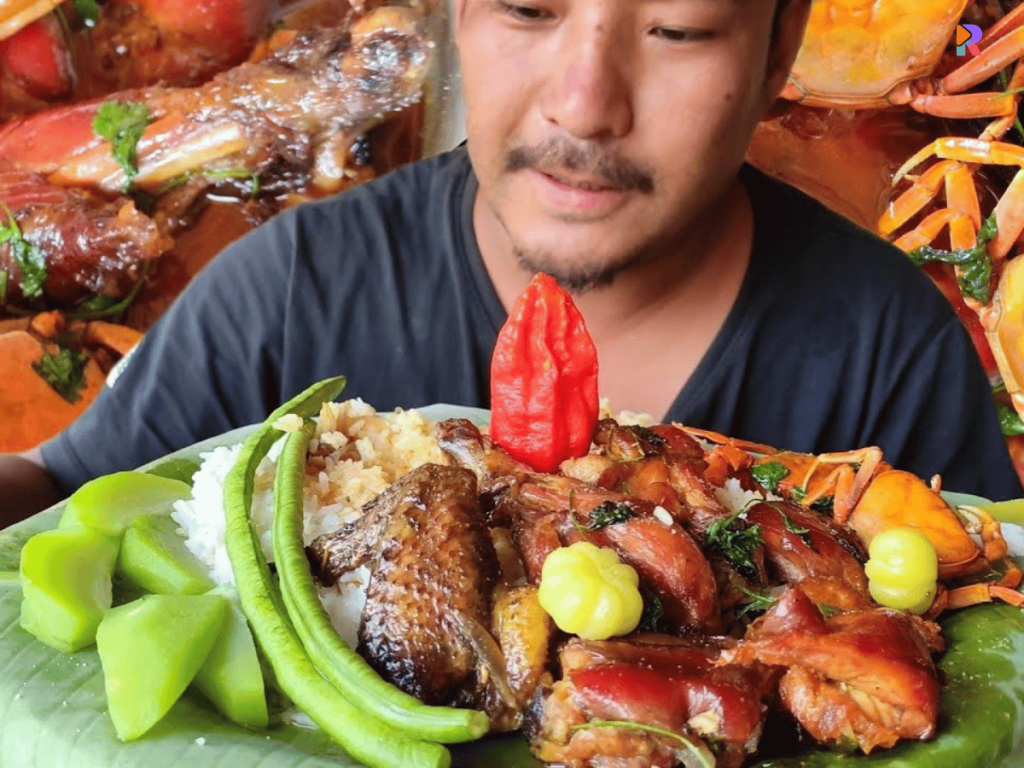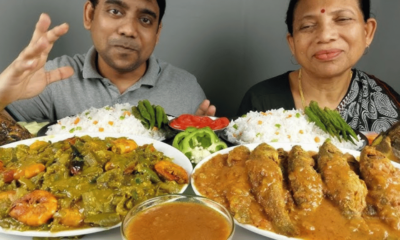Food
Mukbang in India: When Watching Others Eat Becomes Entertainment
Watching other people eat is a surprisingly popular form of entertainment, and Mukbang in India is a lot more popular than you might have expected!

In recent years, a slightly peculiar trend has taken the internet by storm – mukbang. Originating in South Korea, mukbang (a portmanteau of “meokneun” meaning eating and “bangsong” meaning broadcast) involves creators consuming large quantities of food on camera. This phenomenon has found its way to India in the last few years, captivating audiences and creating a new niche of content creators.
The Indian Mukbang Scene
India’s diverse culinary landscape provides a perfect backdrop for mukbang content. From the vibrant flavors of South India to the unique dishes of the Northeast, Indian mukbang creators are offering viewers a virtual feast for the senses.
In Tamil Nadu, a content creator known to her fans as Ashifa ASMR has become a prominent figure in the Indian mukbang scene. Her videos feature her consuming generous portions of various dishes, accompanied by the distinctive sounds of eating. This combination of visual and auditory elements has proven to be a winning formula, attracting millions of viewers to her channel. She currently has 657K subscribers on YouTube and her most viewed Mukbang has an astonishing 12M views. Watch HERE.
The northeastern state of Nagaland has also produced its share of mukbang stars. One such creator is Apollos Kent, a farmer in his mid-thirties who has gained recognition for his mukbang content. Kent’s videos serve a dual purpose: not only do they entertain, but they also educate viewers about the rich culinary traditions of the Northeast. Through his content, Kent aims to challenge prevailing stereotypes about Northeastern cuisine and showcase its unique flavors and ingredients. This particular video below is one of his most popular vlogs, with 3.7M views!
Another notable figure in the Indian mukbang landscape is MaddyEats, the online persona of content creator Madhuri Lahiri. With a substantial following across various social media platforms and 5.38M just on YouTube, Lahiri has built a reputation for her enthusiastic approach to eating and her selection of visually appealing dishes.
The Appeal of Mukbang
The popularity of mukbang in India is particularly noticeable in the Northeastern region. This regional trend raises an intriguing question: What draws people to watch others eat?
- Vicarious Satisfaction: Mukbang videos allow viewers to experience the pleasure of eating without actually consuming the food themselves.
- Cultural Exploration: These videos offer a window into different food cultures, especially important in a country as diverse as India.
- Companionship: For many, mukbang videos create a sense of sharing a meal with someone, combating feelings of loneliness.
- Sensory Stimulation: The sounds of eating, especially when combined with ASMR techniques, can provide a uniquely satisfying auditory experience.
- Entertainment: The often exaggerated reactions and the sheer quantity of food consumed can be entertaining to watch.
The Dark Side of Mukbang
While mukbang videos are undeniably popular, with “mukbang” titled videos receiving over 30 billion views this year alone, they’re not without controversy. Critics argue that these videos promote unhealthy eating habits and contribute to food waste.
There’s also the question of the creators’ health. Consuming large quantities of food regularly, often at odd hours to cater to global audiences, can potentially lead to health issues. It’s crucial for viewers to remember that what they’re watching is entertainment, not a dietary guide.
A Personal Take
As someone observing this trend, I can’t help but feel conflicted. On one hand, mukbang videos celebrate food and bring people together virtually. They showcase culinary diversity and can be a form of cultural exchange. On the other hand, the potential health risks for creators and the promotion of excessive eating are concerning. There are actually reported deaths related to overeating amongst Mukbang creators in some places.
It’s important for viewers to enjoy these videos responsibly, appreciating them as entertainment rather than emulating the eating habits displayed. For creators, balancing their content creation with their health should be a priority.
In the end, mukbang videos are just another trend in the ever-evolving landscape of digital content. As long as it’s approached mindfully by both creators and viewers, it can continue to be a unique form of entertainment that satisfies our collective fascination with food and eating.





















